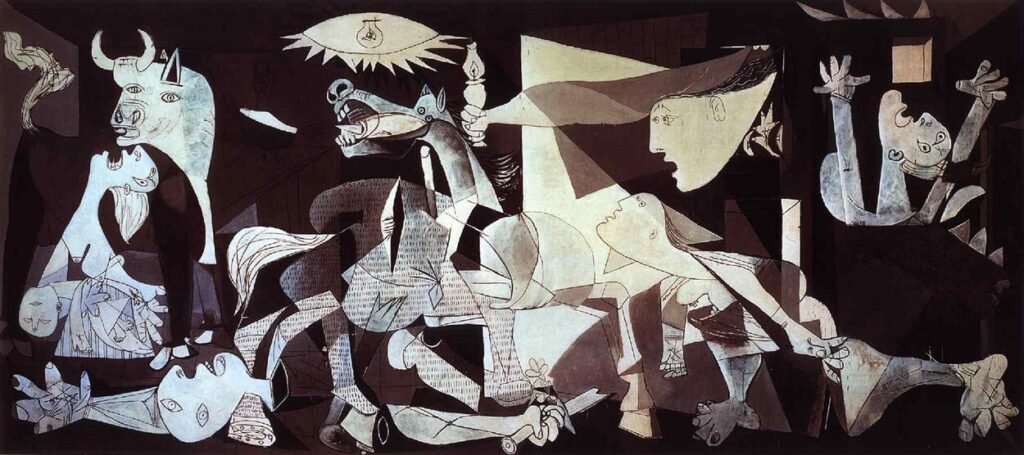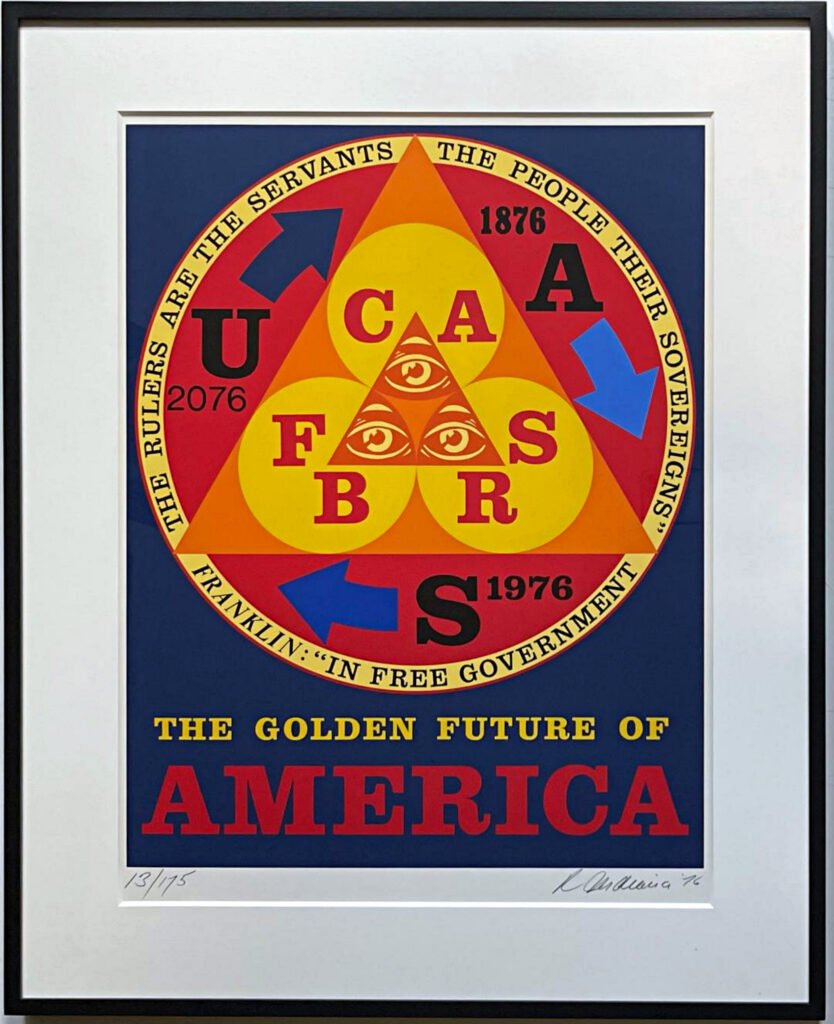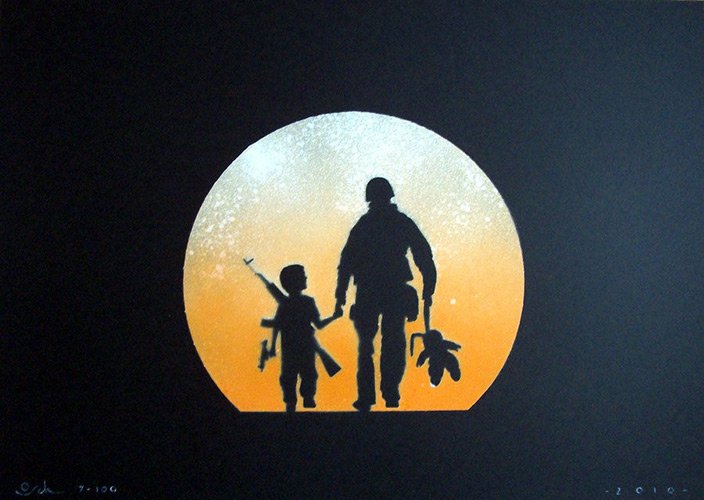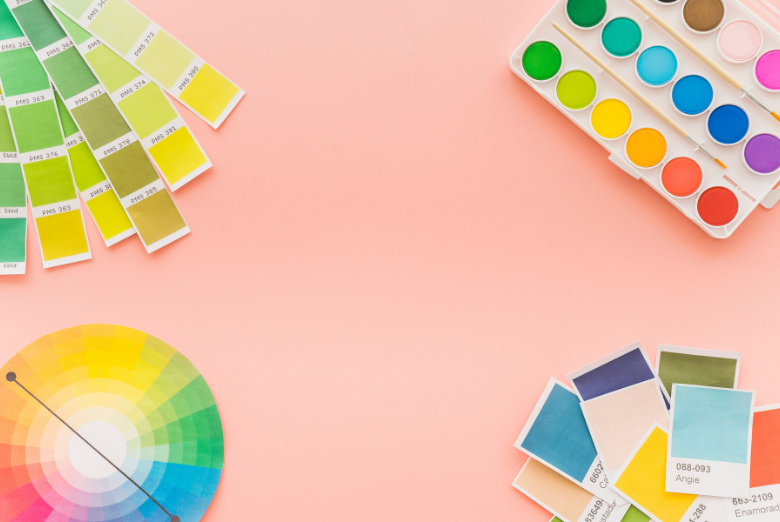Politics and art have been intertwined for a long time, often serving mutual interests. History shows how art has provided a platform for political expression, protest, and satire. Beyond this, art has also played a significant role in political propaganda.
From advocating for human rights and freedom to promoting equality and religious awareness, art has helped people understand and communicate various political issues. It has also served as a powerful tool for protesting or challenging unjust decisions and biased laws.
While some serious artists create impactful works to advance political causes, others use their art to inject humor into politics and offer a more lighthearted perspective.
1. Guernica – Pablo Picasso, 1937

Picasso’s “Guernica” is perhaps his most renowned piece and undoubtedly his most potent political statement. Created in response to the horrific bombing of the Basque town of Guernica by Nazi forces during the Spanish Civil War, the painting captures the anguish and destruction of the event. The rampaging bull, a recurring symbol in Picasso’s work, is often interpreted as a representation of his ego, whether as a bull or Minotaur. In this context, however, it could also symbolize the brutal advance of Fascism. Picasso himself described the bull as embodying brutality and darkness, while the horse, he explained, represents the suffering of the people of Guernica.
2. Free South Africa- Keith Haring- 1985

South Africa endured the oppressive apartheid system for many years. In his artwork “Free South Africa,” Keith Haring depicts two figures—one black and one white. The black figure is portrayed as larger and more powerful, dominating the smaller white figure. This artwork reflects a time when the white minority in South Africa continued to repress the native population, despite their dwindling numbers.
3. The Bombing Squad – Blek le Rat (2008)

Blek le Rat is a legendary figure in street art, celebrated for his politically charged and intellectually stimulating graffiti that adorns walls worldwide. With a career spanning over 30 years, he made a significant impact in 2008 with his powerful piece, The Bombing Squad. This artwork captures the anxiety of French locals anticipating a potential invasion by Russian soldiers.
4. Shepard Fairey-George Orwell Print Set with Books (2008)

Shepard Fairey, a highly skilled street artist known for his innovation, drew inspiration from George Orwell’s masterpieces, 1984 and Animal Farm. He applied his creative vision to these works, designing a striking book cover that captures the fear experienced during the Cold War and Stalinist era.
5. Photo Op – Peter Kennard, 2010

With a career spanning nearly 50 years, Peter Kennard stands out as one of Britain’s most influential political artists. And is arguably its foremost practitioner of photomontage. Kennard’s embrace of this medium in the late 1960s revived its association with radical politics. Drawing from John Heartfield’s anti-Nazi montages of the 1930s. The Iraq war of 2003 spurred Kennard to reengage with photomontage and his collaboration with Cat Phillips employed digital technology to produce a defining image of the conflict. The piece, titled Photo Op, depicts a smiling Tony Blair taking a selfie in front of burning oil wells in a desolate landscape. And it became a powerful visual symbol of Blair’s contentious Iraq policy.
6. Gheorghe Virtosu – Socialist Fraternal Kiss

Gheorghe Virtosu’s abstract paintings provide a powerful commentary on politics. Showcasing his exceptional talent for embedding coded messages within his work. “The Socialist Fraternal Kiss” serves as a stark warning against nostalgic sentiments toward the USSR and socialist ideologies.
7. Golden Future of America- Robert Indiana- 1976

America envisioned its own Golden Age, and Robert Indiana provided it with a visual representation. His painting captures a satirical commentary on America’s future outlook, infused with a political undertone. Indiana also included a phrase by Benjamin Franklin. “In free governments, the rulers are servants and the people their superiors and sovereigns.” This highlights that in a nation, true power rests with its citizens rather than the leaders.
8. Jordan Seiler – PublicAccess Box 2.0 (2015)

Jordan Seiler designed these public access boxes for the Public Ad Campaign. Each box contained a master key capable of unlocking nearly every billboard worldwide. This initiative aimed to highlight the need for billboards around the globe to be replaced with evocative art pieces.
9. Jason Bronkhorst – African Dictator (2016)

Jason Bronkhorst, a South African artist known for his fearless political commentary, has recently introduced a new series titled The Board Of Directors. This collection addresses a range of political issues, such as post-colonialism, capitalism, patriarchy, and white supremacy in South Africa. In his work African Dictator, Bronkhorst presents a stark depiction of brutality and raw power.
10. Otto Schade – No Comment (2016)

Many streets in London feature striking sunset murals by Otto Schade, a Chilean artist. Each vibrant work of art tells its own unique story. One such piece, depicting a carefree child alongside a soldier, symbolizes the idea that life is filled with joy regardless of one’s background or occupation.




Pingback: How Art Shapes and Reflects Global Political Narratives - snagcoupon.com